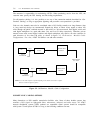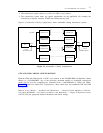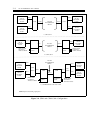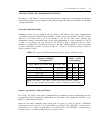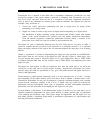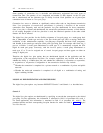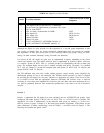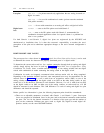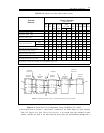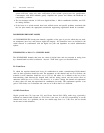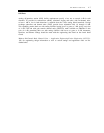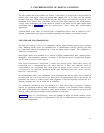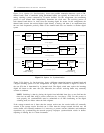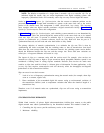
4-4
THE DIGITAL LOSS PLAN
Loss plan
pbx-eia — for private-network-only applications that use analog tie trunks or
digital tie trunks
pbx-low — for use with combination tie trunks (private networks tandemed
with public networks)
toll — for use with connections to an analog toll office or digital toll office
Digital conn
loss
normal — same as the EIA options used with Generic 2
low — same as the ISL options used with Generic 2; recommended for
combination tie-trunk applications where low speech volume is a problem but
echo is not a problem
For both Generic 1 and Generic 2, digital loss plans are engineered by the NEC/REC and
administered at installation time. It is then the customer's responsibility to monitor the user's
perceptions of the plan and to administer appropriate changes as the user’s network configuration is
altered.
PORT-TO-PORT LOSS VALUES
The port-to-port loss values shown in table 4-2, Digital Loss Plan (Port-to-Port Losses), can be used
to determine the correct loss between two properly terminated ports of a digital switch.
To determine the correct end-to-end loss for a tandem connection (through both an analog and digital
switch), simply add up the losses in each leg. Figure 4-1, End-to-End Loss Configuration Using
Combination Tie Trunks, shows a tandem network consisting of two analog switches and one digital
switch, with combination tie trunks connecting the analog switch to the digital switch.
Combination tie trunks are frequently encountered when station-to-station calls are being completed.
Depending on the particular facilities involved, some unexpected losses may be encountered. For the
network shown in figure 4-1, if a call is made from an on-premises station (ONS) on one of the
analog switches tandeming through the digital switch to an ONS on the other analog switch, an end-
to-end loss of 6 dB should be measured in each direction. However, if a call is made from an ONS
on the digital switch to an ONS on either one of the analog switches, an end-to-end loss of 9 dB
should be measured in each direction. This 3-dB difference is a result of analog and digital loss plan
differences and should be expected.
Before specific loss information is given, the following important points should be remembered:
● There are no adjustable attenuators associated with Generic 1 and Generic 2 ports. Port-to-port
losses are composed of distributed losses in the ports and in the internal connection made between
the ports. The loss for the internal connection is a function of the port type and the number of
ports on the connection. Different port types (such as, digital CO, digital tie trunk, digital off-
premises station) use the same DS1/DMI hardware.



